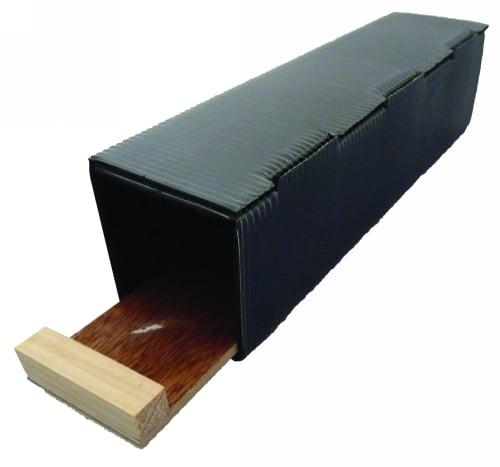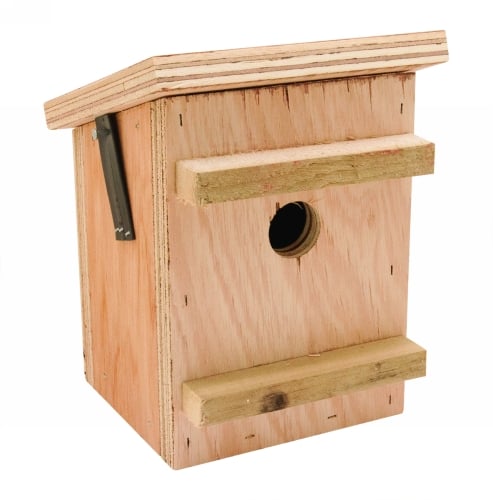
The Dormouse is one of Britain's most endearing mammals and is currently endangered, so Dormouse conservation is of high importance. This is mostly due to much of its habitat of deciduous woodland and hedgerows being lost in development and intensive farming.
It is an arboreal creature, spending most of its time foraging for berries, nuts and insects in trees and hedges. Couple this with the fact that it is also nocturnal, and sleeps for half of the year and it helps to explain why they are rarely seen in the wild!
Now, the thought of mice being endangered might be surprising given that they breed so prolifically; not so the Dormouse. They breed once or twice a year, producing only 3 or 4 young. This means their colonies can be quite small and which exacerbates the problem of habitat loss.
In the autumn hazelnuts & fruit such as blackberries are a very important food source as they have to build up their fat reserves ready for their hibernation overwinter. Once the temperature drops in late autumn they are ready to descend from their lofty habitat and make themselves a nest underground at the base of a tree or hedgerow. They will make a nest lined with moss and leaves (often honeysuckle) and wrap themselves well. They then allow their bodies to go ‘torpid’ where their body temperature drops to that of their surroundings, their breathing slows and their heartbeat drops to one tenth of its usual rate. This allows them to conserve almost all their energy while the winter beats out its anger on the world above them, and helps to give them their relatively long life span of around 5 years.
Breeding nests are often built of grass interwoven with honeysuckle and can be can be anywhere from a few feet above the ground in a thicket of brambles to high up in the forest canopy. Increasingly, artificial habitats in the form of Dormouse Nest Boxes are being put up, both as a surveying tool and as mitigation for the loss of habitat.
Dormice are protected by law and you are not permitted to even handle one without a licence from Natural England. See Natural England's Dormouse Conservation guidelines for the latest information on undertaking Dormouse surveys or to get involved contact the PTES who run the National Dormouse Monitoring programme.
Dormouse Conservation
Much work is being done by various groups including Wildlife Trusts, The Mammal Society and local wildlife groups to help conserve the Hazel Dormouse. Developers are also required to employ the services of professional ecologists to survey potential development sites for Dormouse presence. This is usually done by putting up quantities of Dormouse Nest Tubes in likely habitat. These tubes are manufactured from polypropylene and come flat packed. Once they have been folded into a rectangular shape, a specially designed wooden base is inserted. This extends out of the front of the tube providing a way for the dormouse to enter and nest in the far end against the back plate. These tubes are monitored regularly throughout the summer for signs of Dormouse presence and are an essential piece of equipment for Dormouse conservation.
There are several ways of checking boxes and tubes for Dormouse presence.
 Dormouse Tubes
Dormouse Tubes
The wooden insert in Dormouse tubes is designed to slide through the tube, complete with any nesting material, or indeed the Dormice themselves if they haven’t scarpered before hand. Ecologists will often follow the following procedure:
1) Insert a rag in to the open end of the tube to prevent Dormice escaping
2) Take the entire tube down from the branch and place into a large, tough, clear polythene bag.
3) Reach in to the bag and slide the insert out of the tube.
If dormice are found to be present, they will usually be checked for gender, aged and weighed. Weighing is done by placing the animal in a Dormouse Holding Bag and using a Pesola Spring Scale.
 Dormouse Boxes
Dormouse Boxes
Dormouse boxes have the entrance hole in the back of the box, against the tree trunk. Two battens act as spacers so that there is sufficient space for them to crawl in. It is essential that the material for the box is resilient to the weather, eg Hardwood Exterior Ply, and it is also ethical for the timber to be FSC certified.
If you are simply providing boxes to mitigate for habitat loss, there is no reason why the roof should not be fixed down. However, for surveying purposes boxes are usually supplied with a lift off roof, or better still, a sliding roof.
Assuming the entrance hole is blocked with a rag, as with the tubes, the sliding roof design is much better for keeping your specimens in the box. You can simply slide the roof a little to the side, check for dormouse presence, and if positive, quickly close it again. With the lift off design, there is much more chance of the dormice making a rapid exit up the tree.
Dormouse Bridges
Where there is an unavoidable disturbance of woodland dormouse habitat, for instance by a new highway, Dormouse bridges are sometimes required to ensure that there is no loss of foraging opportunity and colonies do not get fragmented. These are fixed above the road and link the tree canopy either side.
A raft of other surveying tools are also available for both dormouse conservation and other species, such as IR cameras that detect movement and then take a still photograph or video clip, night vision binoculars and much more.


